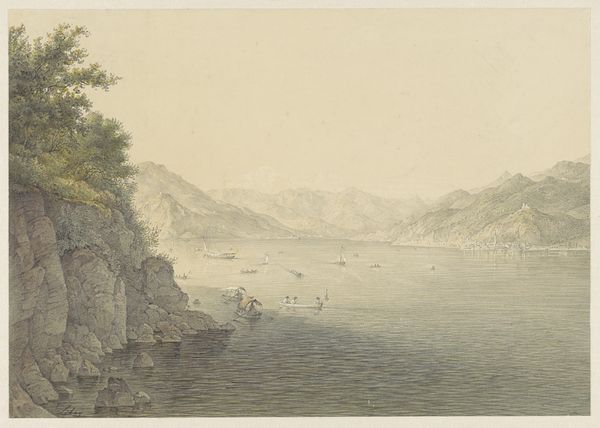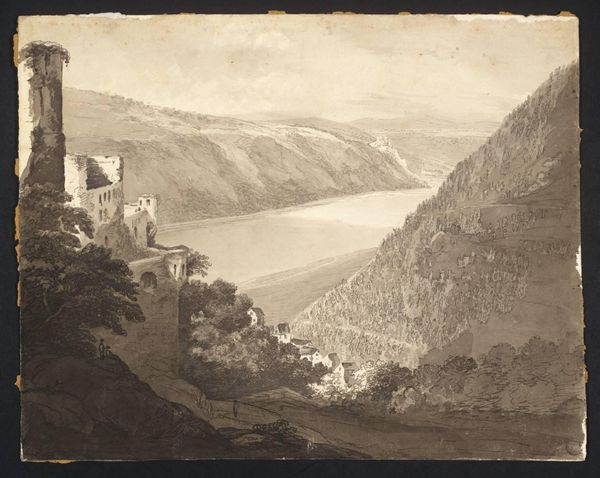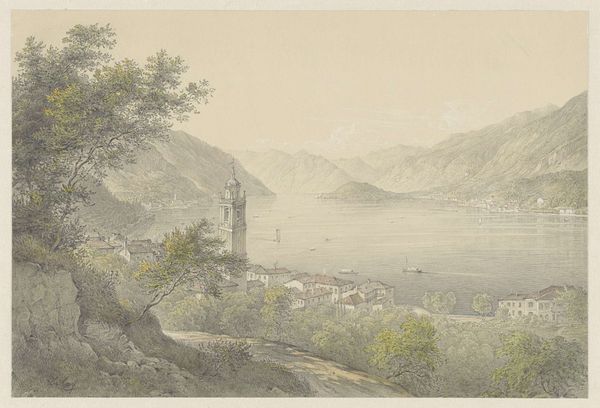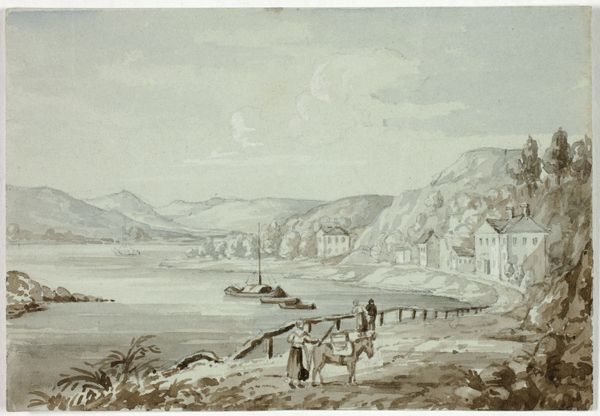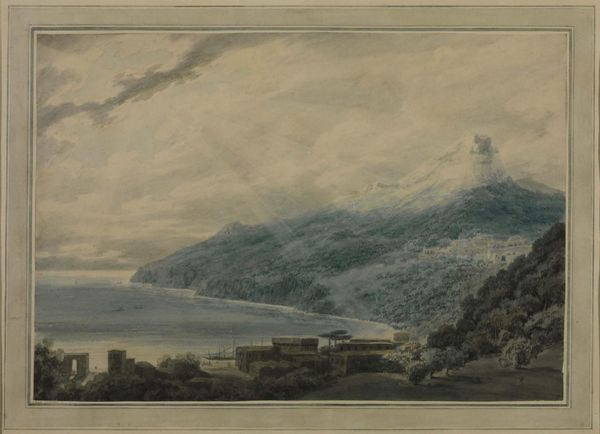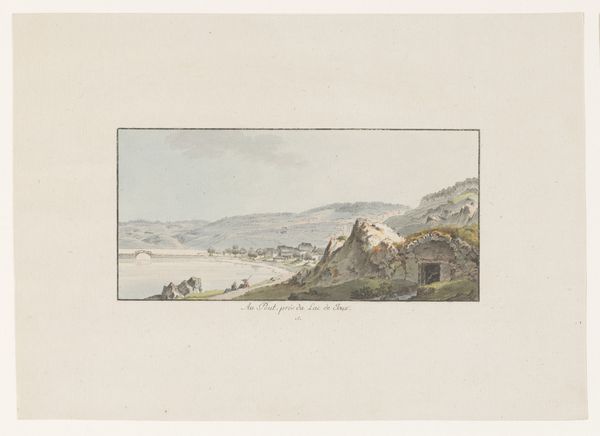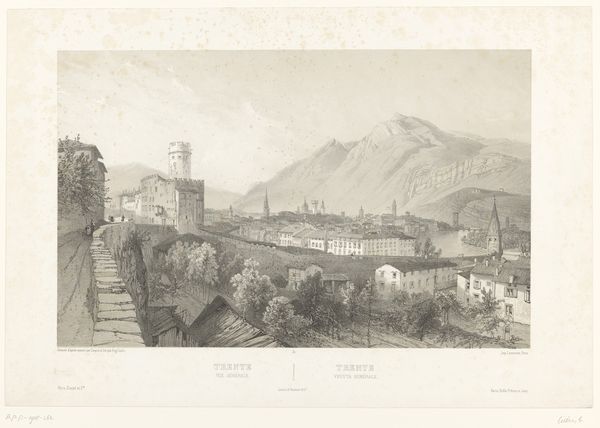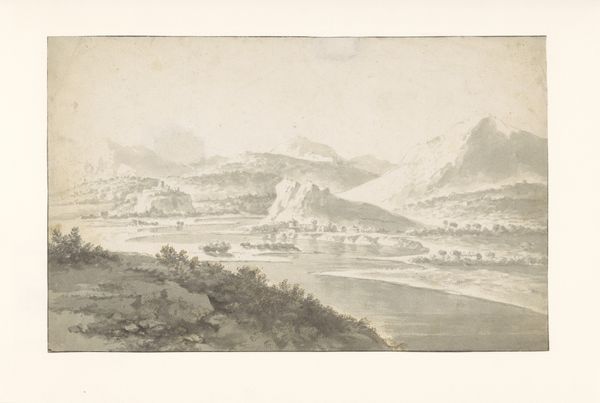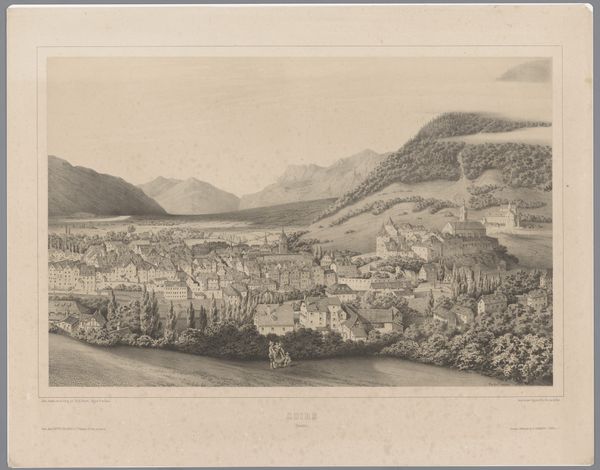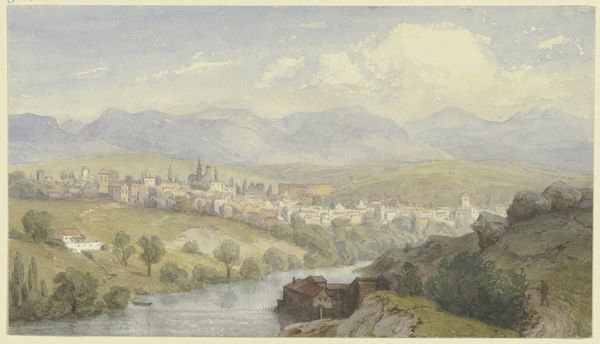
Dimensions: height 274 mm, width 398 mm
Copyright: Rijks Museum: Open Domain
Curator: We're looking at a piece titled "Gezicht vanuit het park van Bellagio, aan het Comomeer," made sometime between 1824 and 1888 by Karoly Lajos Libay. It’s a watercolor. Art Historian: It feels so… hushed. Muted greens and grays. A quiet sense of observation, almost like a secret being shared. I’m drawn to that little bell tower, tucked among the trees – it feels very symbolic. Curator: "Plein-air," as they say. Considering the probable production circumstances, outdoors with paper and pigments. How readily available were quality art supplies for someone like Libay? And what was his patronage system like? Were these paintings commissions or personal studies of landscapes he encountered during leisure or travels? Art Historian: Landscape was quite on trend when this was made. Note the layers – mountains, the placid lake, foliage and dwellings gently cascade into the water. It is Romanticism. Water in art almost always carries connotations of purification or the subconscious mind, you know. Combined with that tower, maybe it reflects on faith… a higher calling in the face of nature's sublime power? Curator: True. Speaking of power, I see that two agave plants at the edge of the frame are strongly illuminated, maybe an invitation for closer inspection. Were those locally sourced, or are they an imported commodity meant to inspire status and wealth, considering the labour invested in transporting it? I imagine the presence of this type of "exotic" succulent will offer more insight regarding the economy of resources available for the elite who visit such destinations. Art Historian: You've made me consider the visual language differently – the way it quietly advertises wealth. At first glance it simply looks tranquil but yes, the choice and depiction of particular flora can signify much more. What I'd add is to be conscious of how memory is layered in places, people add the iconography on these landscapes, creating the feeling and the memory we later come to associate them with. Curator: Indeed. Every visual is a choice, and choices reflect values, production means, labor, trade, even colonial outreach. A watercolor such as this contains so much about how land itself is commodified through art-making. Art Historian: It reminds us to delve beyond surface beauty and see art as a container for complex dialogues, memories, beliefs. Curator: Yes, material conditions manifest visually. Art Historian: Ultimately, the most resonant symbols reflect humanity.
Comments
No comments
Be the first to comment and join the conversation on the ultimate creative platform.
